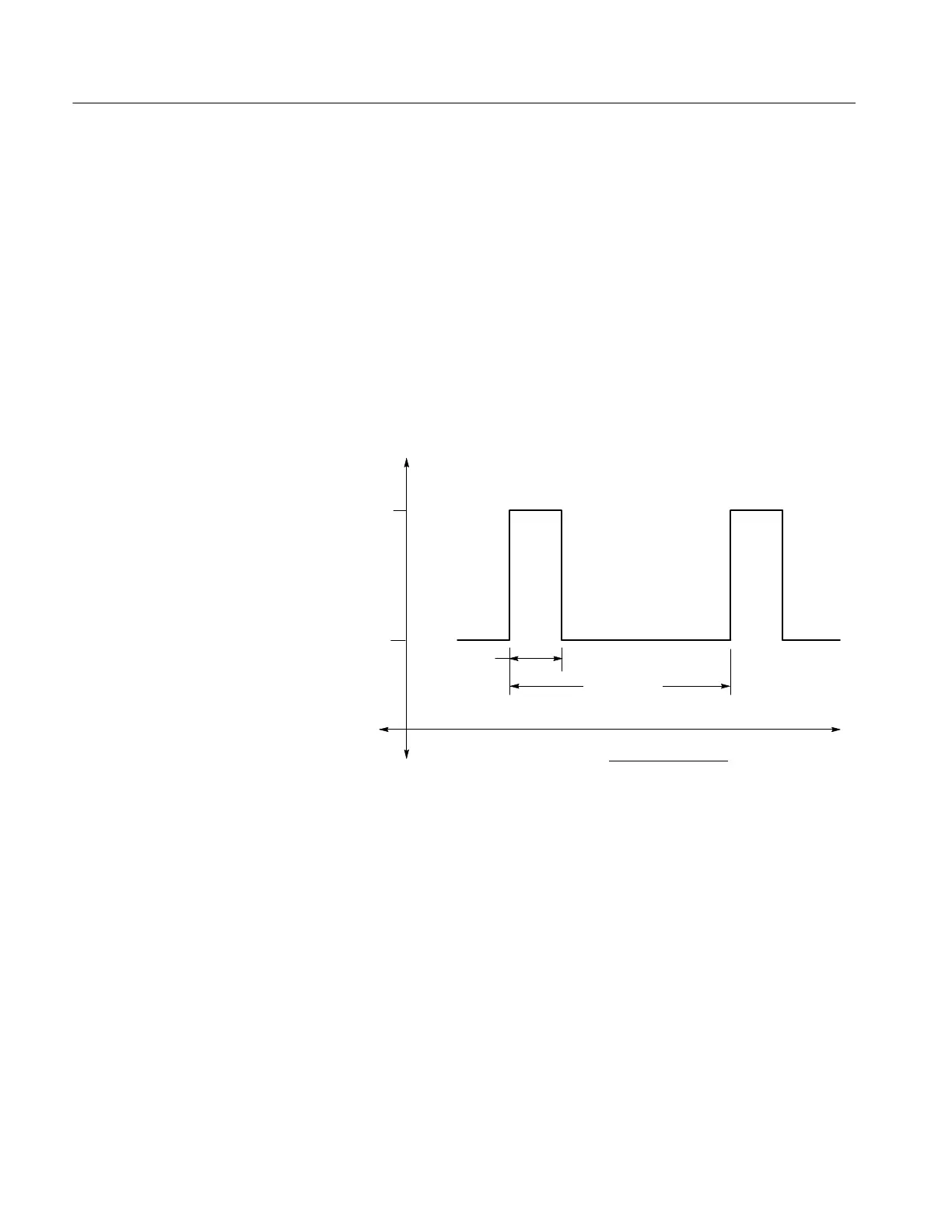Reference Notes
3-6
TCPA300/400 Amplifiers and TCP300/400 Series Current Probes Instruction Manual
Measuring Noncontinuous Current with the TCP404XL Probe
When you measure a noncontinuous current with the TCP 404XL probe, you
need to take into consideration several factors to ensure that you make accurate
measurements and do not trip the thermal overload circuit. The amplitude and
duty cycle of the continuous and noncontinuous current, and the ambient
temperature, all affect the maximum amount of time allowed for the measure-
ment, which defines the safe operating area of the probe.
You can calculate the duty cycle of the continuous and noncontinuous current
when you know the duration of the noncontinuous current (defined in F igure 3--4
as measurement time) and the measurement period. F igure 3--4 illustrates a
continuous and noncontinuous current and how to calculate the duty cycle.
Measured
current (A)
Noncontinuous
current level (A)
Continuous
current level (A)
Measurement
time (min)
Measurement
period (min)
Time (min)
Duty cycle (%) = 100x
Measurement time
Measurement period
Figure 3- 4: Duty cycle calculation
After you calculate the duty cycle of the noncontinuous current you are
measuring, you can use the other factors (continuous and noncontinuous current
amplitude, etc.) to compare your measurement to those s hown in Figures 4--8
through 4--10 in the Specifications section.
You can see how duty cycle affects the measurement time by looking at any of
the three graphs in Figures 4-- 8 through 4--10. As the duty cycle increases on the
x-axis, the measurement time (of the noncontinuous current) on the y-axis
decreases.
Figures 4--8 and 4--9 on page 4--12 illustrate the effect of measuring two different
noncontinuous current amplitudes, 750 amps and 600 amps respectively, with
